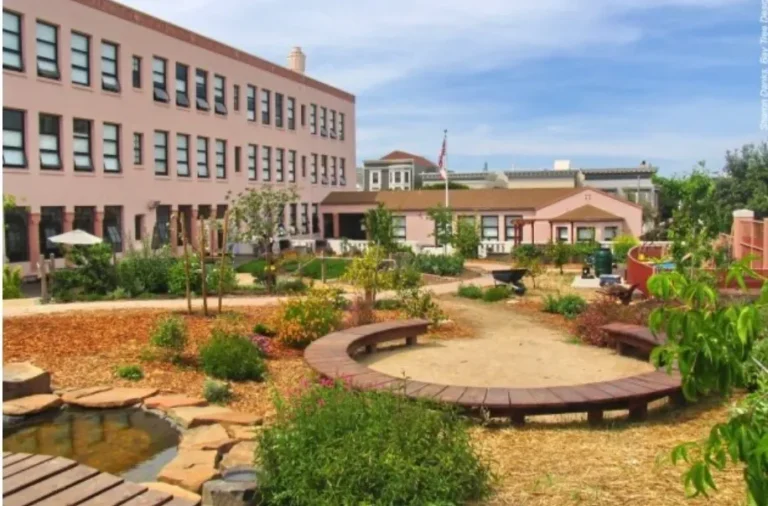A Possible Game Changer for Black and Brown Students!
By Dr. Veda Ramsay Stamps
In general, as a society, we recognize the importance of providing quality education to all children regardless of differences in race or economic background. However, have you ever thought about the impact of the environment that surrounds them? The physical environment in which students learn every day shapes the quality of their education and ultimately affects their success in life. This issue is particularly pressing for black and brown students living in urban areas. California has recognized this challenge and presented a solution by allocating $47 million to plant trees and green urban schools, an initiative set to revolutionize the education system. In this blog post, we will explore the legislation in detail, discuss why it is essential, and provide solutions to some of the challenges that stakeholders may encounter.
The new first round of grants aim to tackle the problem of school asphalt getting exceedingly hot, up to 140 degrees and intends to support schools in creating a better outdoor environment for learning and playing, particularly in urban areas. A hundred schoolyards statewide have been selected for the first round of grants, which includes six implementation projects and nine planning projects. It is a well-known fact that schools in predominantly Black and Brown neighborhoods often face financial constraints and lack resources, which means that students may not receive the same access to nature’s benefits and high-quality education as their peers in more affluent areas. This round of funding is part of Californias’s $117 million Green Schoolyard Grant program aimed at greening spaces and connecting students to biophilia as well as a step towards closing educational equity gaps, but more needs to be done.
It’s important to acknowledge that implementing such projects can be a challenge. Lack of buy-in and knowledge from principals, teachers, and local stakeholders can create roadblocks. To mitigate this issue, there needs to be a authentic campaign educating stakeholders about the benefits of greening their outdoor spaces. One example of a successful campaign is the Outdoor Learning Initiative in California’s San Francisco Unified School District (SFUSD).
Through this program, SFUSD sought to promote outdoor learning opportunities for students by partnering with various community organizations and greening their school campuses. The project also engaged stakeholders such as parents, teachers, administrators, local businesses, and non-profits in order to create vibrant and sustainable green spaces. The project resulted in the installation of vegetable gardens, water-saving irrigation systems, rainwater catchment systems, pollinator habitats, native plantings, and outdoor learning spaces at numerous schools throughout the district. In addition, SFUSD organized workshops to teach stakeholders how to effectively maintain green spaces and ensure their long-term viability. The investment of $20 million in bonds has resulted in nearly 90% of San Francisco schools having access to green spaces.
Underserved schools in the State of California program face systematic challenges such as budget constraints and a lack of staff experience with landscape design that hinder their ability to achieve program objectives. These challenges are especially difficult for principals and teachers in underserved areas, which also face additional obstacles like limited resources, low parental involvement, and high crime rates that make complying with federal regulations more difficult. These challenges can be mitigated by educating teams on the benefits of greening their outdoor spaces and leveraging the resources available to them. As part of the legislative changes, schools must use this opportunity to leverage local, federal, and private dollars to take their projects to the next level. However, it’s essential to remember that greening schools is not just about planting trees – it’s also about creating rich learning environments for students. Schools can use these projects as a teachable moment for students to learn about their environment and take part in innovative and hands-on projects that encourage critical thinking. This involves introducing curricula that teach students the importance of the environment and the role they play in promoting a healthier world.
While creating a greener environment for schools may seem like a daunting task, Bio Equity Ed’s services can help support schools as they develop these much-needed projects. Services may include grant writing and funding, educational workshops and information sharing, summer and after-school programming, and support for curriculum development. Bio Equity Ed can help schools transform their outdoor spaces and create rich learning environments for students.
Greening California schools will create a significant impact on the welfare of the students, particularly those from black and brown communities living in urban areas. It facilitates greener, cleaner, and safer spaces, positively affecting students’ mental and physical well-being. Implementing and adopting the initiative will not be without challenges, but it’s essential to educate, guide and engage local stakeholders, schools, principals, and teachers because they will play a vital role in the success of the initiative. The legislative model empowers our schools and provides a teachable moment for students. The initiative is not just a change in physical space; it’s also a shift in thinking about the broader environmental change that is necessary to improve our environment’s health. Overall, California sets an example for every state to recognize the significance of the environment in which young people learn and the potential impact on their academic and social lives.

